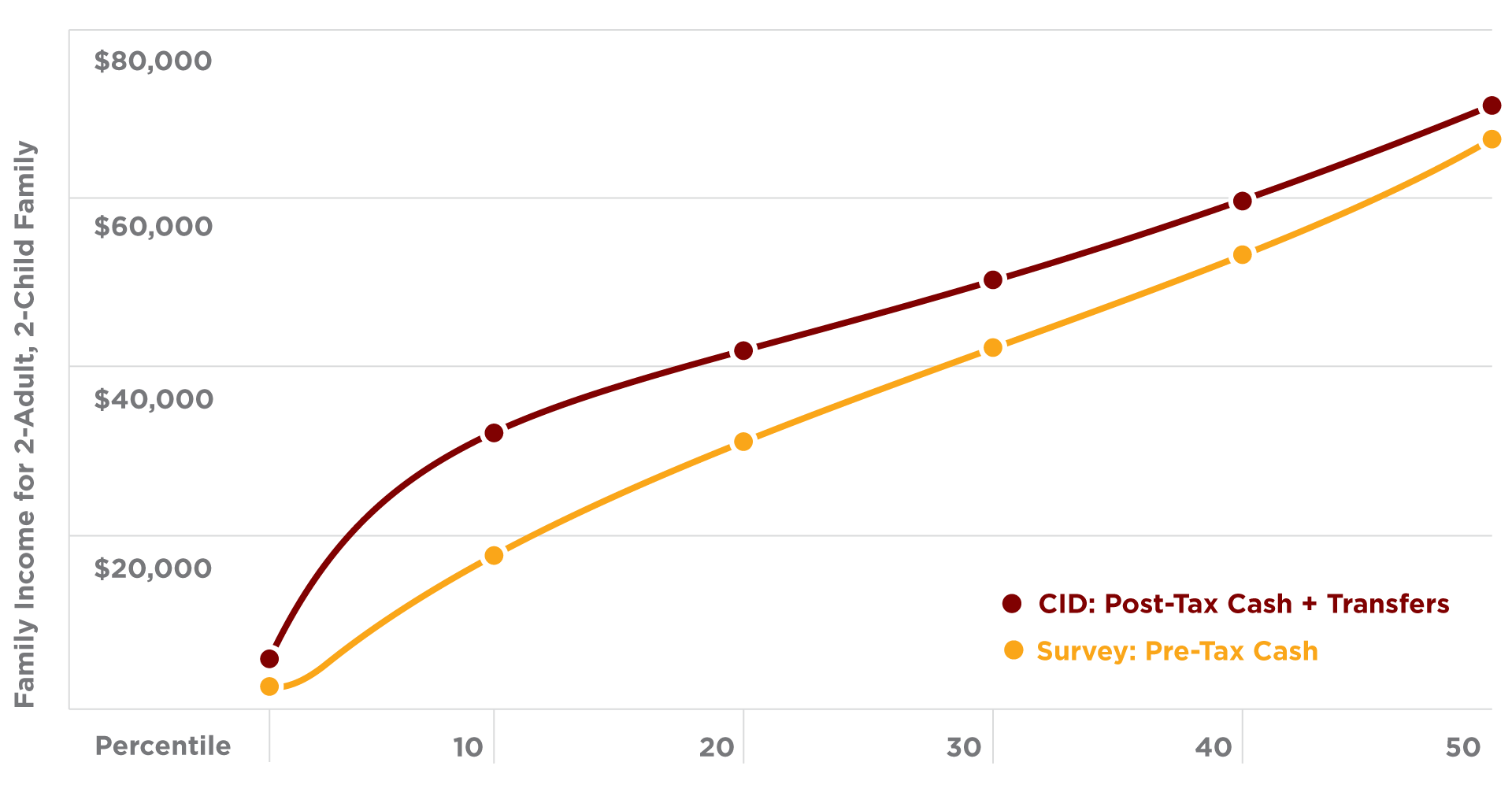How many Americans are poor? How big is the gap in economic well-being between different groups? Do government programs help? What holes in the safety net remain?
Our understanding of these central questions about economic well-being in the United States is based on error ridden data. Government surveys, used for official poverty and income statistics, suffer from a large and growing amount of misreporting of income. Some researchers have turned to administrative data due to the widely recognized problems with surveys. But administrative data sources on their own do not capture the full set of resources available to individuals, and they do not contain the rich demographic information available in surveys that enables focus on vulnerable groups.
The unfortunate consequence is that our understanding of economic well-being in the United States is biased and incomplete. As a result, policymakers are forced to address poverty and economic disparities in the dark.

Sources: 2011 CPS ASEC, Various Administrative Data | Approved for release by the Census Bureau’s Disclosure Review Board, authorization number CBDRB-FY20-019 |Geography: 15 States with Administrative SNAP Data
